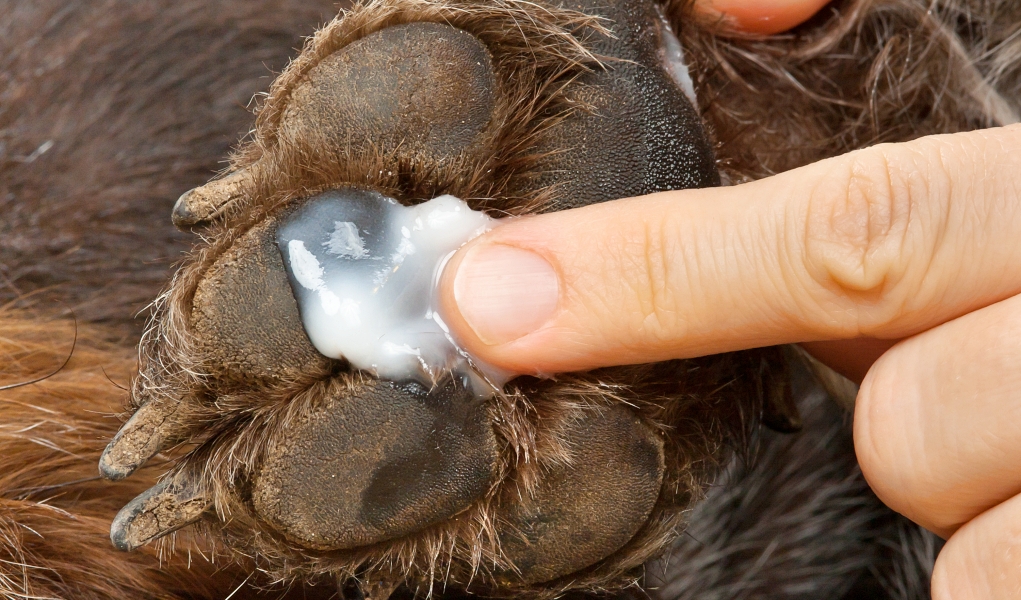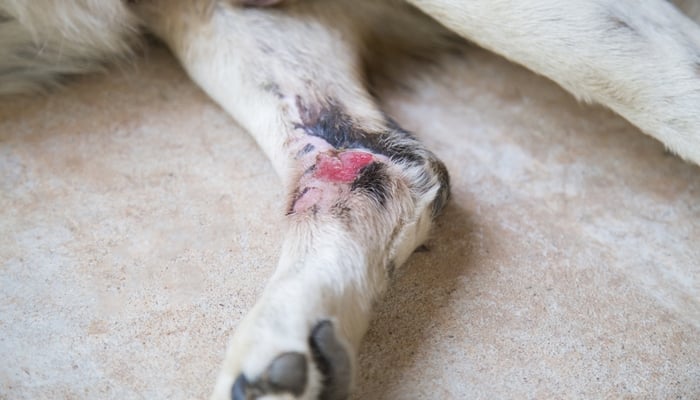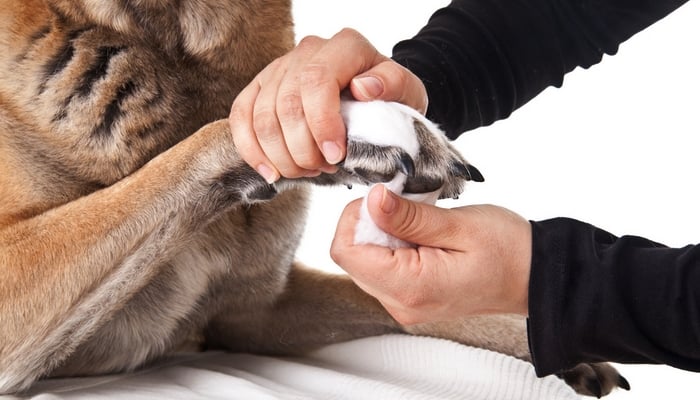If you get a small cut or scrape, you probably know how to clean it out and bandage it on your own.
Cleaning cuts and scrapes on dogs is very similar, but it leaves many pet owners wondering can you put antibiotic ointment on a dog?
You probably have a first aid kit in your bathroom cabinet. You'll need the same for your pet.
Having a good dog first aid kit on hand is imperative because items made for humans may not always be safe for pets.
You may not think you need a first aid kit for your pet, but trust me, you’ll wish you were prepared when your pup is injured.
We have written a guide on making your own pet first aid kit, but in this article, I will specifically address antibiotic ointment for dogs.
Although antibiotic ointment works well for humans, it is always best to discuss any at-home treatments with your veterinarian before using them on your dog.
Can You Put Antibiotic Ointment On A Dog?

If you have a pet first aid kit, you’ll be all set to treat your dog’s wound.
If not, you’ll need to quickly gather a few supplies before cleaning and dressing the injury.
You will need a clean towel and some warm water. You will also need a mild soap and possibly a pair of clippers or scissors to remove the fur from the area.
Sometimes, you may need another person to help you restrain your pet.
Even if he doesn't need to be restrained, it's good to have someone else there to relax the dog and keep him calm while you're tending to his injury.
1. Stop the bleeding
If your dog's wound is bleeding after it is cut, you'll need to apply pressure until it stops.
To do this, use a clean towel to wrap the wound and gently squeeze to apply pressure.
Hold it there, and the bleeding should stop within 10 minutes. However, if it doesn't stop bleeding in 20 minutes, you need to call a vet.
2. Position the dog
Let's assume the bleeding stopped, and you can continue cleaning the dog's wound.
If your pup is small, pick him up and put him on a table. This will make it easier for you to access the wound.
You'll have to get down on the floor with him if he's a large breed. Find a comfortable spot where your dog will feel relaxed.
3. Remove the fur
If you don't have clippers, you can use a pair of scissors or a razor to remove the fur around the wound.
Clippers are the best choice because they virtually eliminate the risk of further injury to your dog.
It is very easy to cut your pet with scissors or a razor, so be very careful and go slowly if you're using one of these tools to remove the fur.
ALSO: Pro Pet Hero Online Dog First Aid Course Review

4. Rinse the wound
Once you've trimmed all the fur around the wound, use the cloth to wipe away any hair that might be stuck to it.
Rinse the wound with warm water until all signs of debris are gone.
Be very gentle, and pat the wound dry.
5. Treat the wound
You're probably wondering when I'll get to the part of this article that answers the question: can you put antibiotic ointment on a dog?
Well, here you go!
Now that you've cleaned the wound, you'll need to treat it. First, apply a non-stinging antiseptic solution.
Is antibiotic ointment safe for dogs? The short answer is yes!
Typically, a small amount of antibiotic ointment is not harmful to dogs.
However, a type of ointment often referred to by the popular brand name Neosporin could cause skin irritation, and it’s not good for your dog to ingest.
While antibiotic ointment for dogs is helpful on minor scrapes and cuts with superficial bacteria, you’ll need to seek veterinary care if your dog’s cut is large or has a puncture wound.
These types of deeper wounds will likely require oral or intravenous antibiotics prescribed by your vet.
If you apply ointment to your pet’s wound, his natural reaction is to lick it off.
You'll need to sit with him for at least 30 minutes to allow the ointment time to do its job.
If you can't keep your dog from licking the wound and irritating it further, you may need to cover it with gauze and medical tape or a bandage.
E-collars are also useful to prevent your dog from accessing the wound.
MORE: How To Make Home Remedies for Dog Ear Infections

You should clean a dog wound 2-3 times per day for the first 3 days and then once a day after that until it begins to heal.
Check the wound multiple times daily for signs of infection, swelling, rashes, etc.
If you notice any excessive redness, swelling, or discharge, take the dog to the vet immediately.
When to seek veterinary care
The rule of thumb is that if the cut only goes through the skin and the very top layer of flesh, you can feel safe treating it at home.
If it goes deeper into the flesh, it's better to have it checked at the vet's office.
There are other instances when you should not treat your pet's wound on your own.
For example, if your pet has been bitten by another animal, he needs to see a veterinarian – no exceptions!
He may need other treatment you aren't aware of, like a rabies vaccination or even a few sutures. It's best that your dog is seen by a veterinarian no matter how minor the bite wound.
If the wound is near your dog's eye, you should also take him to the vet to check his eyes.
Eye injuries can be very subtle in the beginning. A small scratch on your pet's eyeball could lead to an infection in just a few short days.
Finally, you'll want to make sure your dog sees a veterinarian if the wound will not stop bleeding after 20 minutes.
If your dog's blood isn't clotting within 20 minutes, there may be an underlying issue that your vet will need to address.
READ NEXT: 8 Ways To Prevent Injuries in Dogs












